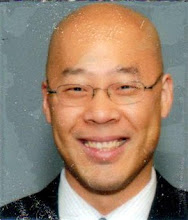Civil Procedure (2005-2006)
X. TRIAL PROCESS
A. Rule 56 – Motion for Summary Judgment (Mo4SJ)
1. Standard – No genuine issue of material fact, and movant entitled to judgment as a matter of law
a. “Material fact” – essential element of claim or defense
b. “Genuine issue” – Actual (objective) and good faith (subjective) controversy; dispute is one which a reasonable jury could resolve in favor of nonmovant. Note: The fact a jury might disbelief a witness is not a “genuine issue”.
2. Policy – For efficiency, eliminate claims and defenses that would not survive Mo4JMOL.
3. Adickes v. S. H. Kress & Co. – Restaurateurs defending against conspiracy claim by white woman who came in with black girls not entitled to summary judgment where evidence does not establish absence of genuine issue, even where no opposing evidence is presented
a. Movant bears burden of showing absence of dispute of fact, so any scintilla of evidence that a jury could interpret in favor of non-movant defeats Mo4SJ
b. Judge should not weigh evidence or assess credibility, but take all possible inferences in favor of non-movant
4. Celotex Corp. v. Catrett – Where movant plaintiff had no evidence on an essential element of case, could not have survived Mo4JMOL, no trial needed, summary judgment proper
5. Moving party’s burden of establishing absence of “genuine issue” [Celotex Corp. v. Catrett, Brennan, J. dissenting]:
a. Initial burden of production (shifts to non-movant is satisfied by movant):
i. if movant has burden of persuasion at trial, must support with credible evidence
ii. if non-movant has burden of persuasion at trial, movant may satisfy burden of production by:
a) submitting affirmative evidence negating essential element of non-movant’s claim; or
b) demonstrating non-movant’s evidence insufficient to establish essential claim, through lack of affirmative of evidence, or through admissions, interrogatories, and other on-record exchanges between parties
b. Ultimate burden of persuasion
6.
B. Burdens
1. Pleading
a. What must go in a pleading: notice pleading for most, heightened pleading for Rule 9
b. Who must put it in pleading:
i. Plaintiff: claims or affirmative defenses to counterclaims
ii. Defendant: counterclaims or affirmative defenses to claims
2. Production
a. Movant without burden of proof must show non-movant cannot prove element of claim/defense, either with evidence negating or by pointing to absence of recorded evidence
b. non-movant with burden of proof must show evidence from which a reasonable jury could find for it
3. Proof
a. Level of proof required to persuade fact finder of elements of claim, damages or defenses (in most civil cases, preponderance)
b. Follows burden of pleading in parties burdened
C. The Jury
1. Right to Trial by Jury
a. Where not available by Constitution, can be granted by Congressional statute
b. Decided by issue, not by case
2. Historical Test [Curtis v. Loether – Landlord who refused to rent to black women in violation of Civil Rights Act entitled to jury trial]:
a. Law or equity?
i. Which court would have tried the case before 1791?
ii. If unclear, reason by analogy.
b. If legal, what type of relief sought?
i. Compensatory damages are legal relief; jury trial
ii. Where statute specifies remedy is equitable, no jury right
a) back pay as restitution is equitable, awarded by judge
b) some causes of action existing in 1791 without monetary relief were at law
c) jury decides whether to impose civil penalties but judge decides amount
c. Complexity test: Practical abilities and limitations of juries? [Markman v. Westview Instruments, Inc.]
3. Mechanics
a. Waivable; must be demanded in pleadings or within 10 days of last pleading on issue
b. Any party can demand; cannot withdraw demand without consent of other parties
c. Due Process default minimum of 6 (waivable)
d. Unanimity required unless by consent
4. Rule 50 – Judgment as a Matter of Law (Mo4JMOL)
a. Mo4JMOL at close of plaintiff’s case-in-chief tests whether plaintiff met burden of producing at trial sufficient evidence for a reasonable jury to find for plaintiff on each element of his claim.
b. Mo4JMOL at close of defendant’s case-in-chief tests same as to defendant’s affirmative defenses.
c. Mo4JMOL at close of evidence and renewed Motion for JMOL: taking all reasonable inferences from evidence at trial in favor of non-movant but uncontradicted, unimpeached evidence from disinterested witnesses in favor of movant, no reasonable juror could find for non-movant.
D. Motions Flowchart
1. Pretrial
a. Plaintiff Mo4SJ. High standard of persuading judge that defendant will be unable to produce sufficient evidence at trial to survive Mo4JMOL. (see 2-b-i)
b. Defendant Mo4SJ. Must show plaintiff will be unable to satisfy burden of production, so that defendant would succeed on Mo4JMOL. (see 2-a-i)
2. Trial
a. Plaintiff presents case. At end of evidence, determine if burden of production met.
i. No: Defendant Mo4JMOL. (see 1-b)
ii. Yes: Case proceeds.
b. Defendant presents case. At end of evidence, determine if evidence sufficient to rebut essential element of plaintiff’s case.
i. No: Plaintiff Mo4JMOL. (see 1-a)
ii. Yes: Evidence closes.
c. If burdens of production met, case goes to fact finder.
E. Preclusion
1. Claim Preclusion – Res judicata
a. Conditions
i. Valid final judgment in first forum
a) Notice
b) SMJ
c) PJ
ii. Same parties
iii. Same claims
b. Cases
i. McConnell v. Travelers Indemnity Co. – Where state law forbids splitting torts claims, dismissal with prejudice in state court of one part of claim precludes the other part in federal court.
ii. Federated Department Stores v. Moitie – Where plaintiff loses in federal court and does not appeal, then files again in state court, and defendant removes to federal court, dismissal for claim preclusion is proper.
2. Issue Preclusion – Collateral Estoppel
a. Issue of fact
b. Actually litigated
c. Full and fair opportunity to be litigated
d. Final and valid judgment
i. Notice
ii. SMJ
iii. PJ
e. Issue was essential to judgment
[lawschool] [outline] [civil_procedure] [due_process]


No comments:
Post a Comment